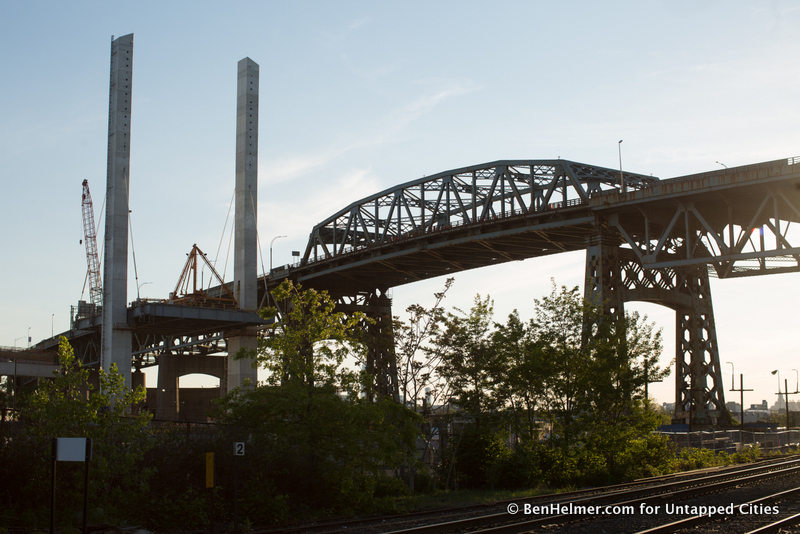4. The Kosciuszko Bridge Was Designed for 10,000 Cars Per Day but Carries Around 185,000

The city’s collective experience of the Kosciuszko comes instead from driving over its battered, borderline-unsafe roadway, a patchwork of steel grating, concrete and asphalt in some approximation of a road surface. It would be a dangerous stretch of road if you were averaging a decent speed, but you almost never are.
When the planners set the roadway as high as they did, the approaches to the bridge became steeper than usual, which leads cars, and especially trucks, to slow down as they cross. Combine that with narrow lane widths, poor sight lines and a lack of shoulders and you begin to understand why, as a driving experience, it can be so nerve wracking , and as a piece of traffic engineering, it’s considered such a exceptional failure.
The new bridge will peak at an elevation thirty-five feet lower than the original, allowing cars to maintain a speed over a reasonable grade. There will be wider lanes, and six more of them, as well as bike and pedestrian lanes. As a traffic conveyor, it represents nothing but upgrade.
The Kosciuszko was originally designed to accommodate 10,000 cars per day, and it’s estimated that it currently carries something like 185,000. Whatever the current needs of the highway and the city are, it is bound to change again in the future. And at that point, if history is a reliable guide, the bridge may well have formed cracks in the roadway or failed at resolving traffic or successfully accommodating the self-driving car. After all, every previous incarnation of this bridge was eventually deemed an outdated failure. It’s not difficult to imagine the new Kosciuszko meeting the same fate.
In March of 2008, the State Historic Preservation Office, after completing its review, concluded: “We concur that there are no prudent and feasible alternatives to the demolition of this historic bridge…We find that correction of many of the substandard safety features would significantly alter character-defining features of the bridge.”
And with that, the faint discussion about the bridge’s worth went quiet.





